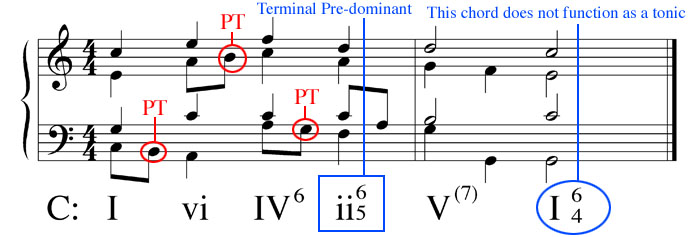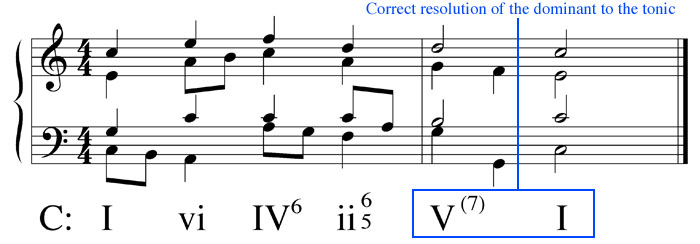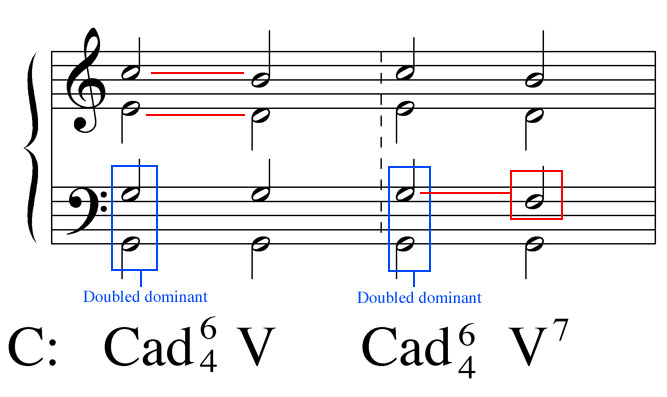The I chord in any key only functions as the tonic in root position and first inversion. In second inversion it no longer acts as the tonic in the way that we perceive its sonority. Therefore it is a misnomer to describe a chord that appears to be the tonic but not sound or function as such as a I 6/4 (although many older music theory methodologies allow for this misleading analytical label). Instead, this particular chord is bound to its resolution to the dominant and cannot be used independently. Since it is not quite a tonic chord (although it has all of the notes of the I) nor a dominant, we label it as a Cadential 6/4 (analytical notation: Cad 6/4 or C 6/4) as it is used primarily at the cadence point and functions as a terminal pre-dominant (meaning that it normally progresses to the dominant).
1. Dispelling the Misconception. It is important for the student musician to remember that the notation of chord analysis is a means to illustrate how the sonorities are being used by the composer to develop a sense of harmonic progression. With this in mind, a I chord can only be labeled as such if it functions as a tonic, which it clearly does not in second inversion. Listen to the following example and note how the music does not come to rest at the so-called 'I 6/4' but maintains a significant degree of tension.
2. Resolution of the Dominant. Compare the previous example to the following passage: it is identical until the tonic chord arrives in root position. Note that the tension of the dominant is completely released.
3. The Cadential 6/4 and its Resolution. Before any dominant chord, a composer can insert a cadential 6/4 to increase the tension as the end of the phrase approaches. The proper cadential 6/4 chord features two dominant pitches, one which must be in the bass voice (to facilitate comprehension of this concept, the chords in the example below feature a simple voicing). As well, the tonic pitch and the mediant must occur in the remaining voices. The bass voice maintains the dominant pitch in the resulting V chord (the other dominant can as well remain on the same pitch or descend to the seventh of the V7 chord, depending on the desired version of the dominant chord resolution), while the tonic descends to the leading tone and the mediant descends to the supertonic.
One alternate to the second example is to reverse the resolutions of the voices articulating the doubled dominant (in this illustration, the bass move from G to F and the tenor from G to G). This results in the V7 becoming a V2 (or third inversion dominant seventh chord), and thus an eventual resolution to a first inversion tonic (I6).
4. The Cadential 6/4 in Context. Here we have integrated the cadential 6/4 into the passage from example 2. above. Note that its placement after the ii 6/5 substantially increases the harmonic force leading to the dominant seventh as we now have two terminal pre-dominant chords occurring successively. The doubled dominant in the Cad 6/4 is split between the bass and alto, while the tenor articulates the tonic and the soprano the mediant. Similarly to any other chord, non-harmonic tones can be applied to the cadential 6/4.






